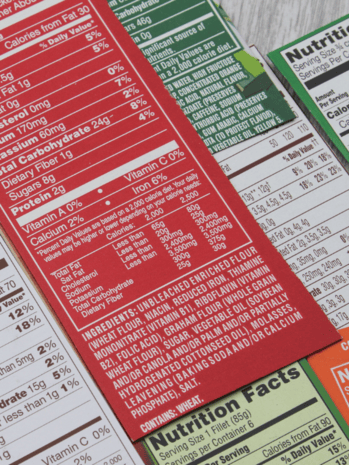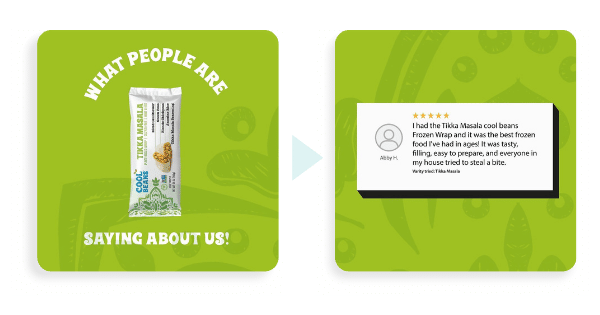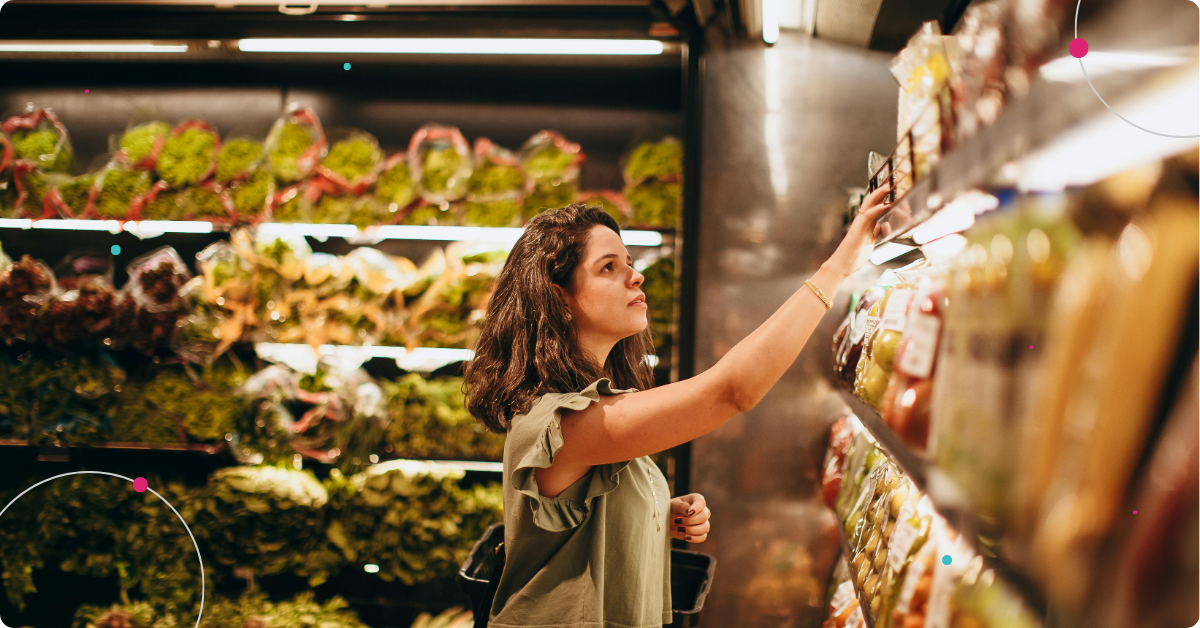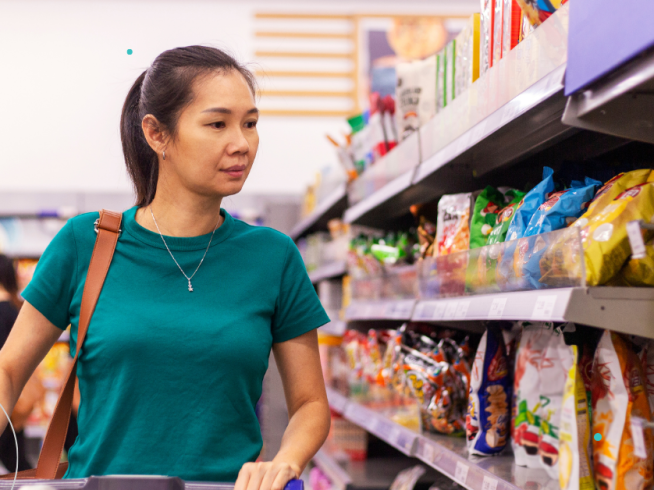The rise of plant-based eating is more than a trend – it’s a steady shift in consumer behavior driven by a mix of personal values, health priorities, and environmental concerns. But while consumer interest is clear, converting that demand into sustained brand growth takes strategic direction. To thrive, plant-based CPG brands must understand not only what shoppers want but also how they make decisions and what earns their long-term trust.
Here’s a practical growth blueprint for brands looking to deepen their impact and scale in the plant-based space.
Table of Contents
-
- Make Ingredient Transparency a Priority
- Focus on Flexitarians, Not Just Vegans
- Go Beyond Claims. Tell a Specific Sustainability Story
- Win In-Store with the Right Positioning
- Sampling for New Customer Acquisition
- Let Benefits Lead the Messaging
- Build Brand Community Beyond Transactions
- Final Thoughts
Modern consumers care about what’s in their food, especially those buying plant-based. They’re reading labels, avoiding additives, and seeking ingredients that sound like real food. The fewer the unfamiliar terms, the better.
Brands that rely on lengthy, overly processed ingredient lists may struggle to build trust, even if the product technically qualifies as plant-based. Simple, real ingredients win.
What to do: Choose whole-food ingredients when possible and highlight them on your packaging. Use your website or product pages to educate consumers on ingredients they may not recognize, especially if they serve a nutritional or functional purpose.

Most plant-based purchases come from flexitarians – shoppers who still eat animal products but are looking to reduce their intake for health or environmental reasons. 37% of the U.S. population identify as flexitarian, and this group accounts for the bulk of the category’s sales.
Flexitarian shoppers are motivated by health, sustainability, and curiosity, but only if the product delivers on taste, texture, and convenience.
What to do: Lead with taste and lifestyle benefits, not just dietary labels. Show how your product fits seamlessly into meals they’re already making. Think: oat milk in coffee, plant-based burgers on the grill, or dairy-free cheese on family pizza night.

Shoppers expect plant-based products to reflect sustainability values, but generic claims aren’t enough. Vague buzzwords like “eco-friendly” or “clean” don’t resonate as strongly as concrete examples.
Sustainability is becoming a decision-making factor, especially for Gen Z and millennial shoppers, but only when brands back it up with real-world impact
What to do: Share specifics. Highlight how your ingredients are grown (e.g., regenerative agriculture), how your packaging reduces waste, or how your supply chain minimizes emissions.
Despite the rise of online grocery shopping, most food and beverage purchases still happen in-store. And plant-based shoppers often make decisions on the spot, meaning shelf placement and packaging matter.
More retailers are integrating plant-based alternatives into conventional categories (e.g., oat milk next to dairy, plant-based meats next to animal proteins). This “integration” helps shoppers find your product in context, which increases trial.
However, that visibility also brings higher competition.
What to do: Optimize your packaging for shelf impact. Make it immediately clear what your product is, who it’s for, and why it’s better. Use clear descriptors, bold packaging, and highlight product certifications that answer common questions (e.g., “Certified Plant-Based,” “Non-GMO Project Verified,” “USDA Organic”).
Trial is essential for plant-based brands, especially when the product format, ingredients, or category are still unfamiliar to many shoppers. But handing out coupons isn’t enough. To make sampling worth the investment, you need to reach the right people and learn from their experience.
At Social Nature, 63% of our community say they discover new products through our platform, and 54% go on to regularly purchase brands they’ve tried. That’s the power of targeted digital sampling: not only does it help drive meaningful trial, it also provides valuable feedback that can shape your messaging, product development, and retail strategy.
What to do: Run campaigns that reach high-intent shoppers in your category and follow up with surveys or review requests. Ask what they liked, what could be improved, and whether they’d buy again. Use this data to defend your position on shelf and get onto more shelves.
One of the myths in the plant-based space is that consumers will buy just because a product is vegan, organic, or gluten-free. The truth? These labels open the door, but they don’t close the sale.
Shoppers want to know what makes your product worth it. That means clear benefit-driven messaging, relatable use cases, and packaging that quickly communicates your value proposition.
What to do: Lead with product benefits, not just attributes. Think: “easy to digest,” “less sugar,” “gut-friendly,” or “perfectly creamy.” These are the hooks that convert interest into purchases, especially when shoppers are comparing options in the same aisle.
Consumers who buy plant-based are often making values-based decisions. They want to feel connected to the brands they support – not just at checkout, but as part of a shared mission.
This creates a unique opportunity for brands to go beyond transactions and cultivate loyalty through conversation, transparency, and responsiveness.
What to do: Invite feedback and respond to it. Share behind-the-scenes content about your team, your sourcing, and your product journey. Use email and social channels to spotlight customer reviews or stories. Think of your customers as co-creators of your brand.

One of the myths in the plant-based space is that consumers will buy just because a product is vegan, organic, or gluten-free. The truth? These labels open the door, but they don’t close the sale.
Shoppers want to know what makes your product worth it. That means clear benefit-driven messaging, relatable use cases, and packaging that quickly communicates your value proposition.
For more insights on how win as a plant-based brand, check out our webinar, What Plant-Based Shoppers Want and How to Deliver.




